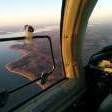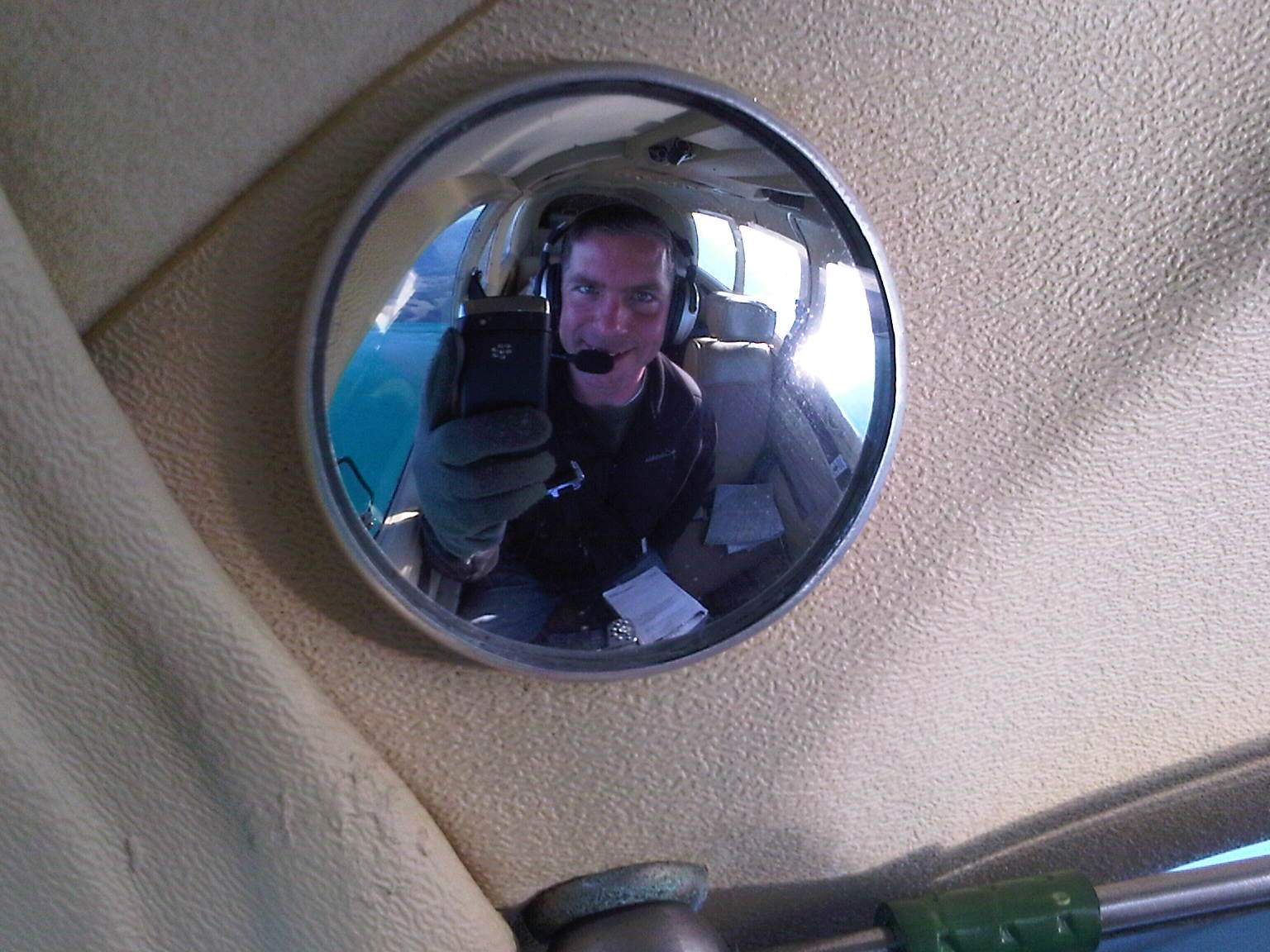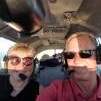-
Posts
77 -
Joined
-
Last visited
Profile Information
-
Gender
Male
-
Location
Dallas, Texas
-
Interests
Adventure Flying, Overseas Flying, Flight Instruction, landing where no airplane was meant to go....
-
Model
Former owner of 1968 M20G
Recent Profile Visitors
1,624 profile views
Seanhoya's Achievements
-
I always flight planned for 135kts in a G model, which is known to be the slowest of Mooneys. Like the C model, it also uses the carbureted Lycoming O-360. It seems like 135 or 140kts would be a conservative estimate.
-
You might consider a Brackett air filter. The only downside of a Mooney on unpaved strips is that the air filter is located perfectly to collect dirt! On a windy day, you might actually notice that your oil turns brown because of all of the dirt! So, anything you can do to make changing the filter easier is good. Also, if you can replace the original with a more efficient filter, all the better (thus, the Brackett air filter comment). If paving is out of the question, you might consider rolling the dirt occasionally - anything to keep the dirt down.
-
William - those are impressive maintenance records! Do you have any rules of thumb for staying out of the "red box" in a turbo-charged engine? Do you not lean as aggressively? And what about LOP in a turbo-charged engine? Thanks - Sean.
-
The $10,000 to $15,000 estimate includes everything I did annually, so it definitely includes small upgrades or reconfigurations. Frankly, I know a lot of people claim to have $2,000 annuals, but I never saw it except when working with a local A&P - certainly not with Mooney services centers.
-
Larry - Do you see a significant speed advantage of the K over the J? I recognize that this has a lot to do with altitude. I have traditionally done most of my flying down low up to 8000', although I took a normally aspirated Mooney up to 11,500 and even 12,500 once out West. So it is hard to say whether I will do more flying in the FLs, because I have never really had a need to, in the past. But I do a lot of long-distance flying, so if the benefit is there, I might start flying higher. Thanks, Sean.
-
Seanhoya changed their profile photo
-
I am considering my next Mooney, and I wanted to ask if anyone has any thoughts on annual maintenance costs between non turbo-charged and turbo-charged Mooneys? I know the conventional wisdom - that turbo-charged Mooneys are more expensive to maintain, but does this hold true when put to the test of actually comparing numbers? I spend $10,000 to $15,000 annually to maintain a 1968 G to my standard of maintenance. Does anyone have estimates for Js or Ks which might be data points for comparison?
-
That is just too good - mixing two passions in life - a Mooney and Gangnum Style!
-

Tempest fine vs massive w long electrode
Seanhoya replied to bonal's topic in Vintage Mooneys (pre-J models)
I had good luck with the fine wire, aggressive leaning, and I also changed out the carburetor. For me, it was worth the extra expense. -
Hello 3914N. I dealt with static line issues in my 1968 M20G for years. I rebuilt the aft static drain using a kit from Lasar. I replaced the alternate static and tubing under the pilot-side dash (because I didn't know how to use the one that was already installed - it was a somewhat rare pull-type model). In the end, it was a really talented mechanic in Melbourne, FL, who brought to my attention that all connections in the static system have to use small plastic sleeve-like connectors. None of those were present in the system aft of the cockpit. So he installed those, closed the system, and the system passed the leak-check with flying colors. A couple of thoughts - clearing both static-line drains was always part of my preflight. Make sure you are doing that. Find a mechanic who understands static systems and ask him or her to check to make sure that yours is actually installed correctly. Consider rebuilding your aft drain. And check under your pilot-side dash to verify that you don't indeed, have an alternate static port already installed. If not, I highly recommend to install one. I once had my static system freeze in-flight, and it was not an experience I would like to repeat. Also, remember that in extremis, you can break the VSI glass to allow cabin air to be your alternate static. One last thought - when my static system froze, it did so at 4000'. That flight, I was the most talented pilot in the world. Nothing I did would cause me to be off-altitude! When I descended, though, something unexpected happened. My airspeed indicator started showing greatly increased airspeed. Once I got down to 1600', though, the system started to thaw, and everything eventually returned to normal. So expect the unexpected in terms of indications. Clear Skies! Sean
-
Hey Gitmo, Potomac is a great field to fly out of. A couple of recommendations: make sure you shoot the GPS approach a couple of times during daylight and VMC, and do your first nightime arrival in the twilight - it is hard to pick out the field being nestled in the trees. Also, having commuted from Potomac to Linden for a year (just South of Newark), I quickly learned that flying low under the airspace is by far the fastest way to go - IFR traffic often causes you to add a half an hour to the flight. BTW - I would always fly over Cecil County on my way North and South. Also, bear in mind that, While David does a great job clearing the field, the snow can cause airfield operations to come to a grinding halt in the winter. Also, I would recommend pre-heating in the winter, and the extra cost of a paved space goes a long way for your back. Finally, numbers, numbers, numbers! Airspeed control is paramount at a small field like Potomac, and especially so for Mooneys. I flew a G model, and I would be at 80 MPH on approach, 75 on short approach, and around 72 in the roundout, depending on weight and wind. I have gone around more times than I like to admit at Potomac, and made one landing where I thought I was reaching the plane's physical limits to handle a crosswind (Don't worry about go-arounds in the FRZ - they are free - just keep your squawk!). If the crosswind (GUST!) is greater than 15 KTS, I would recommend not flying at Potomac, even if our Cessna brothers are. BTW - I know that I am biased, but Potomac is the best field in the DC area - hand's down - great choice! Clear Skies! Sean
-
Hey ladies and Gents, No missionary work in Ukraine - I am at the US Embassy. I have flown a couple of times - a Yak 52 and last weekend in an Aeroprakt A-32. Miss my Mooney (Alex's Mooney - glad it is in good hands), but thinking about getting something with a bit more push next time and flying it across the pond. We'll see. Until then, thank God the spring is here! Do zystrichi! Clear Skies! Sean
-
Clean it and touch it up with touch up paint. Always use the tail cover (never let the plane sit without it - especially in the Spring) - no birds should be able to nest with the cover on. The Velcro goes through the tail to connect both sides and the cover should be snug around the vertical portion of the empannage. There are two areas of the cover that you need to make sure are flared out within the tail to not allow birds to pass (in the tail by the control rods, as seen looking into the tail from behind, pull the netting left and right to cut off access to the inside). You might also consider putting up a fake owl on the tie-down space, although they are only partially effective.
-
Don't forget leaning. Rember, fuel cools the cylinders, so if you are aggressively leaving, you will run hotter. While I always aggressively leaned on the ground, on the air if I was running hot, I didn't. Minimize your time idling and running up on the ground - this always caused the engine to run hotter. Put the cowl on the horizon for a good cruise climb. This will force more air into the engine. Accept whatever airspeed this gives you. Consider replacing the oil cooler and modifying your intake...The guppy hole of old Moonies just isn't good for cooling. I don't know that you can totally "solve"this issue...I struggled with it for 8 years with a G model which didn't have cowl flaps.
-

How Well does a Mooney Handle Rough Air?
Seanhoya replied to MBDiagMan's topic in Vintage Mooneys (pre-J models)
I know that the aeronautical engineers will chime in on this one, and of course "wing loading" will come up... But let me answer entirely subjectively simply as a Mooney pilot.... I'm a word, "No." What you get with a Mooney is speed, efficiency, and race-car style handing. Yes - the control forces are a little heavy in the roll, but a Mooney is definitely a step up from a Cessna in terms of handling. But you sacrifice stability for this in the design of the Mooney. You can depart controlled flight in a Mooney in seconds if you aren't paying attention. I think you would have to try to do the same in a Cessna. In terms of afternoon Texas chop, just don't try to overcontrol the plane, and all will be good (accept some deviations that you might not on a beautiful day). And tighten down on your seatbelt, lest you wack your head! Clear skies... -
How about this: You accidentally turn off the engine when you are done with the check, vice returning to the Both detent. Nothing has to fail - just pilot error. Does anyone have specifics regarding this course?





